Ditapis dengan
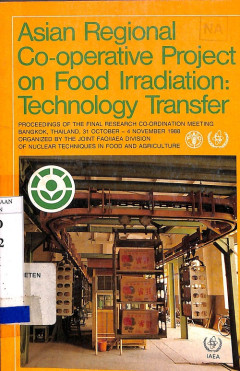
Asian Regional Co-operative Project on Food Irradiation : Technology Transfer…
Proceedings contains material Review; Radiation preservation of onions under tropical conditions; Combined treatments and irradiation to reduce microbial contamination in dried cuttle fish; Irradiation of hot peppers to improve their hygienic quality; Preservation of dried fish powders and mixed condiments by gamma irradiation; Commercial storage and marketing trials of irradiated onions and ga…
- Edisi
- -
- ISBN/ISSN
- 9201004923 / 00741876
- Deskripsi Fisik
- 183 p. : Illus. ; 24 cm
- Judul Seri
- -
- No. Panggil
- 539.2 PRO a
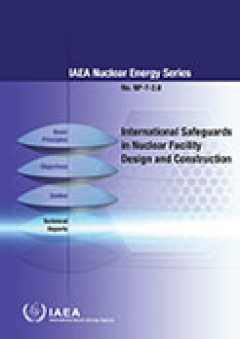
International Safeguards in Nuclear Facility Design and Construction: IAEA Nu…
This IAEA publication provides guidance on the inclusion of safeguards considerations in nuclear facility design and construction. This first volume introduces the basic principles of safeguards by design and discusses the goals, costs and rewards, and places the information into the context of nuclear facility design and construction. Benefits and opportunities for all stakeholders are emphasi…
- Edisi
- -
- ISBN/ISSN
- 978-92-0-140610-1
- Deskripsi Fisik
- 22 p.; 30 cm.
- Judul Seri
- IAEA Nuclear Energy Series
- No. Panggil
- 621.483 IAE i (2)
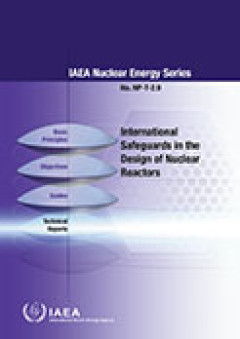
International Safeguards in the Design of Nuclear Reactors: IAEA Nuclear Ener…
This IAEA publication provides guidance on the inclusion of safeguards considerations in nuclear facility design and construction. This first volume introduces the basic principles of safeguards by design and discusses the goals, costs and rewards, and places the information into the context of nuclear facility design and construction. Benefits and opportunities for all stakeholders are emphasi…
- Edisi
- -
- ISBN/ISSN
- 978-92-0-106514-8
- Deskripsi Fisik
- 63 p; 30 cm.
- Judul Seri
- IAEA Nuclear Energy Series
- No. Panggil
- 621.483 IAE i
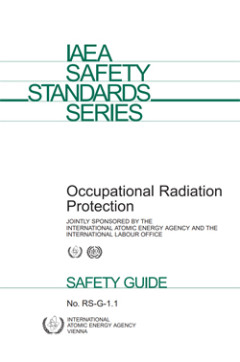
Occupational Radiation Protection | IAEA Safety Standards Series No. RS-G-1.1
This Safety Guide, co-sponsored by the ILO, provides general guidance on the establishment of an effective radiation protection programme for occupational exposure, appropriate for the sources of radiation likely to be encountered in a range of industries, medical institutions, educational and research establishments and nuclear fuel cycle facilities. It further provides the necessary guidance …
- Edisi
- -
- ISBN/ISSN
- 92-0-102299-9
- Deskripsi Fisik
- 73p; 243KB
- Judul Seri
- -
- No. Panggil
- 613.62 IAE O

Radiation Protection against Radon in Workplaces other than Mines | Safety Re…
This report deals with radon and thoron and their decay products in workplaces other than mines. It is intended for use in the application of radiation protection principles in those workplaces where employers may not have an extensive background in radiation protection. It provides practical information on action levels for workplaces, on monitoring techniques and on actions aimed at reducing …
- Edisi
- 33
- ISBN/ISSN
- 92–0–113903–9 / 1020–6450 ; no. 33
- Deskripsi Fisik
- 79 p;57KB
- Judul Seri
- -
- No. Panggil
- 613.62 IAE R
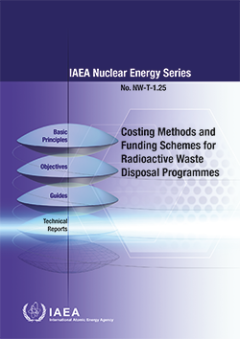
Costing Methods and Funding Schemes for Radioactive Waste Disposal Programmes
Reliable methods for estimating the cost of a radioactive waste disposal programme are crucial to ensure that the necessary funding for completing the disposal programme is available. Estimating the cost for disposal is however a challenging and complex task. Disposal programmes themselves are complex and long-term undertakings and conditions can be expected to change significantly over the tim…
- Edisi
- -
- ISBN/ISSN
- 978-92-0-108819-2
- Deskripsi Fisik
- 90 Hal
- Judul Seri
- -
- No. Panggil
- 621.48335 IAE C
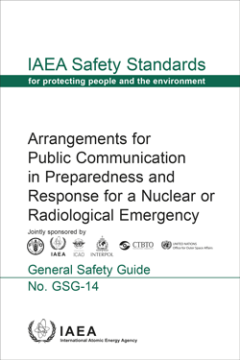
Arrangements for Public Communication in Preparedness and Response for a Nucl…
This Safety Guide supports Member States in developing arrangements for communicating with the public and media and coordinating official information in the response to a nuclear or radiological emergency. These arrangements facilitate the successful implementation of protective actions and the delivery of consistent messages. Specifically, the Safety Guide describes the infrastructure and proc…
- Edisi
- -
- ISBN/ISSN
- 978-92-0-109019-5
- Deskripsi Fisik
- 126 Hal
- Judul Seri
- -
- No. Panggil
- 614.876 IAE A
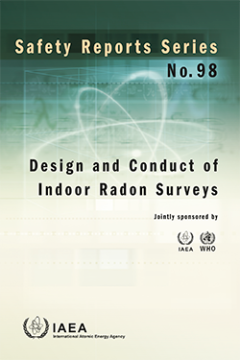
Design and Conduct of Indoor Radon Surveys (Safety Reports Series No. 98)
This Safety Report draws on the requirements of international standards and the recommendations of international organizations as well as on the scientific literature, together with direct experience from a number of IAEA Member States in relation to carrying out representative indoor radon surveys. The need for and the purpose of representative indoor radon surveys are discussed, as are the fa…
- Edisi
- -
- ISBN/ISSN
- 978-92-0-101019-3
- Deskripsi Fisik
- 100 Pages
- Judul Seri
- -
- No. Panggil
- 613.62 IAE D

Risks and Benefits of Energy Systems: Proceedings of a Symposium Julich, 9-13…
Proceedings contains material Energy, economy and society; Poster presentations: Risks and impacts of energy systems; Risk management; Poster presentations: Low probability/High consequence risks; and Poster presentations: National energy strategies in response to global constraints. (Jml)
- Edisi
- -
- ISBN/ISSN
- 9200207847
- Deskripsi Fisik
- -, 671 p. : Illus. ; 24 cm
- Judul Seri
- Proceedings Series
- No. Panggil
- 333.7 PRO r

Plasma Physics and Controlled Nuclear Fusion Research 1986, Vol. 3: Eleventh …
Proceedings contains material Inertial Confinement (Session B); Technology and reactor concepts (Session H); Fundamental processes and new trends (Session I); and then Summaries (Session L). (Jml)
- Edisi
- Eleventh
- ISBN/ISSN
- 9201302878
- Deskripsi Fisik
- 629 p. : Illus. ; 24 cm
- Judul Seri
- Proceedings Series
- No. Panggil
- 530.44 PRO p
 Karya Umum
Karya Umum  Filsafat
Filsafat  Agama
Agama  Ilmu-ilmu Sosial
Ilmu-ilmu Sosial  Bahasa
Bahasa  Ilmu-ilmu Murni
Ilmu-ilmu Murni  Ilmu-ilmu Terapan
Ilmu-ilmu Terapan  Kesenian, Hiburan, dan Olahraga
Kesenian, Hiburan, dan Olahraga  Kesusastraan
Kesusastraan  Geografi dan Sejarah
Geografi dan Sejarah